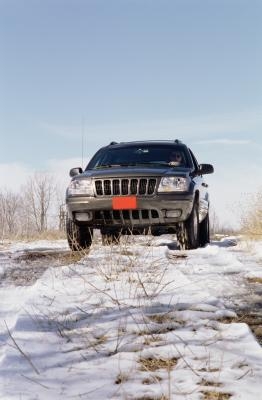
The rear differential on a vehicle translates the torque delivered from the drive shaft to the wheels. Limited slip differentials, used primarily on four wheel drive vehicles, contain special gearing and clutches. When the vehicle is driving normally and the wheels are traveling at the same speed, the clutches do not come into play. When one wheel turns faster than the other due to slipping on dirt, ice, mud or other off road terrain, the clutches engage and deliver more power to the wheel that still has traction.
Check the fluid level. With the vehicle parked on level ground, remove the filler plug from the differential. Differential gear oil needs to be at or right below the level of the filler hole. Lack of differential oil causes noise to emanate from the differential while driving and eventually causes the gears to prematurely wear or seize, disabling the vehicle.
Check for leaks. A loose differential cover or defective gasket results in low oil levels. A damaged or worn pinion seal also causes the loss of differential gear oil. Check the differential breather for clogs, kinks or other damage. Replace any gaskets or seals and tighten the differential cover bolts to seal leaks.
Listen for knocking sounds when starting or shifting gears. This is an indication of damaged gears or an incorrectly adjusted differential. Drain the differential gear oil into a pan either through the filler hole using a hand pump or by loosening the bolts on the differential cover. Look for metal particles or pieces in the oil using the magnet. These are an indication of damaged or worn gears or clutches. Remove the differential cover entirely to visually inspect the gears and clutches.